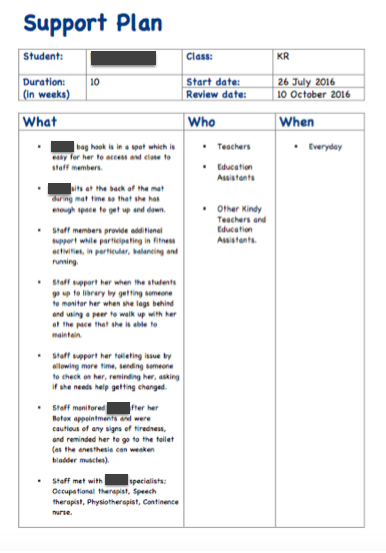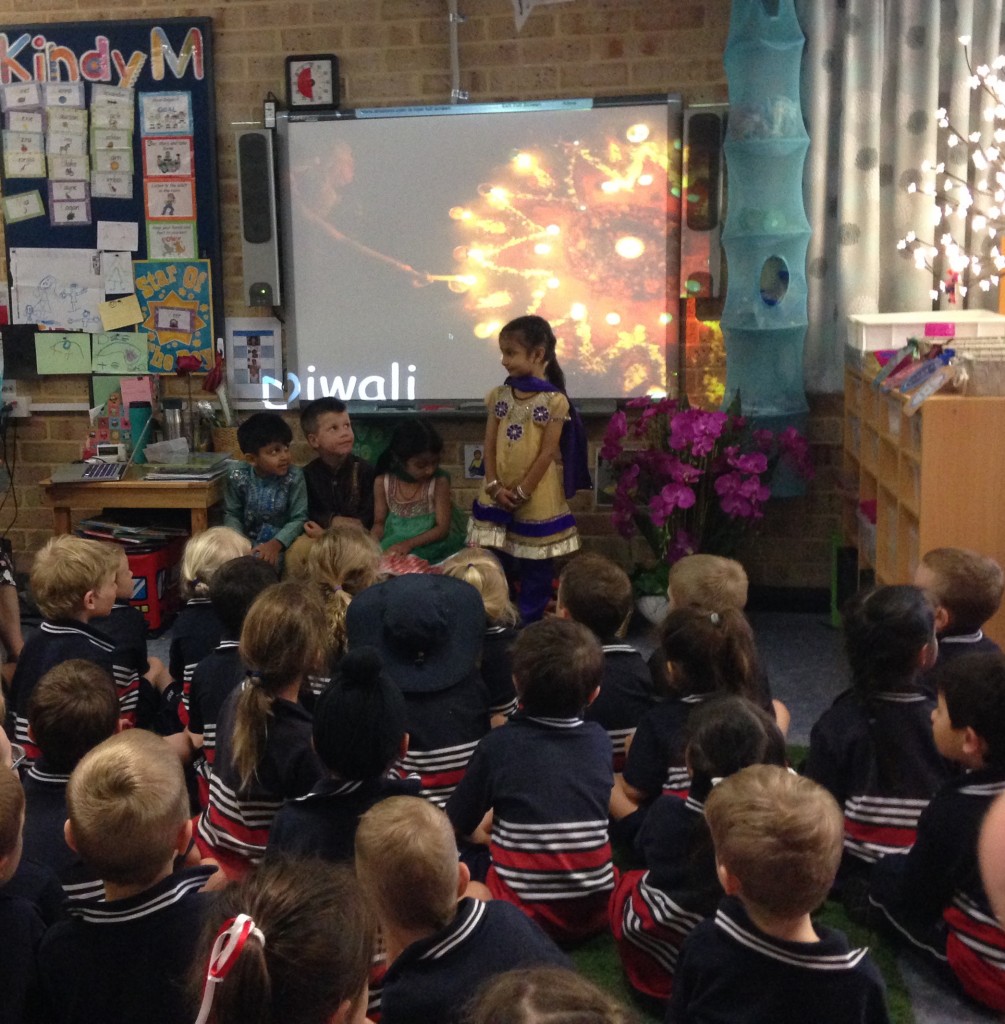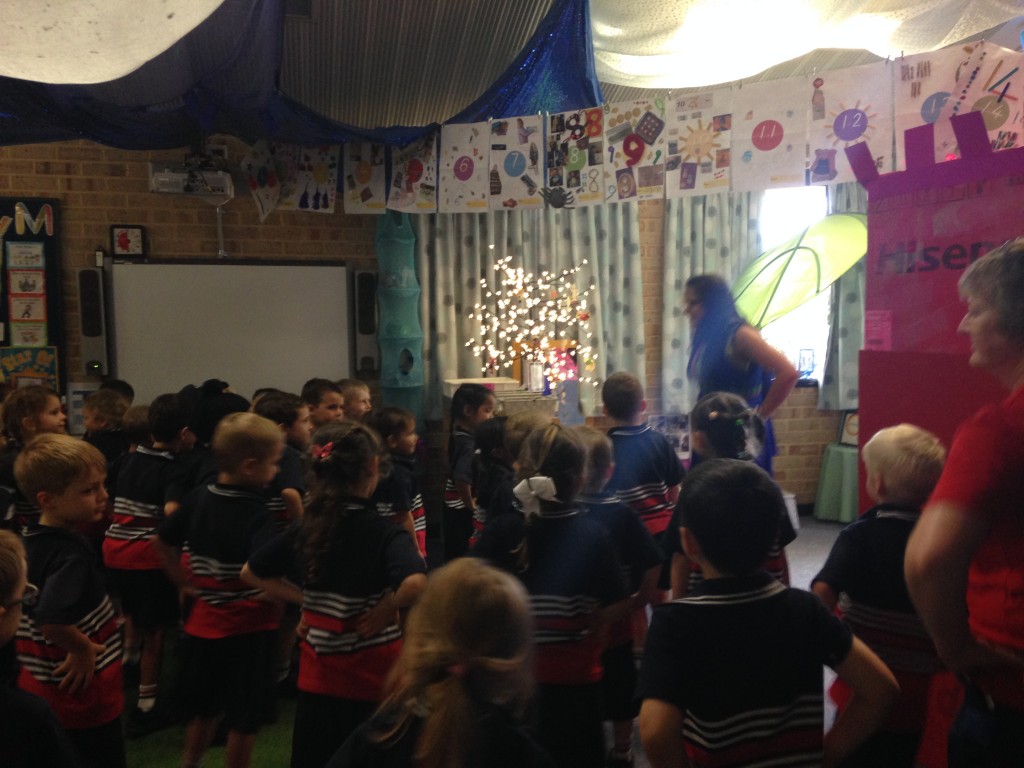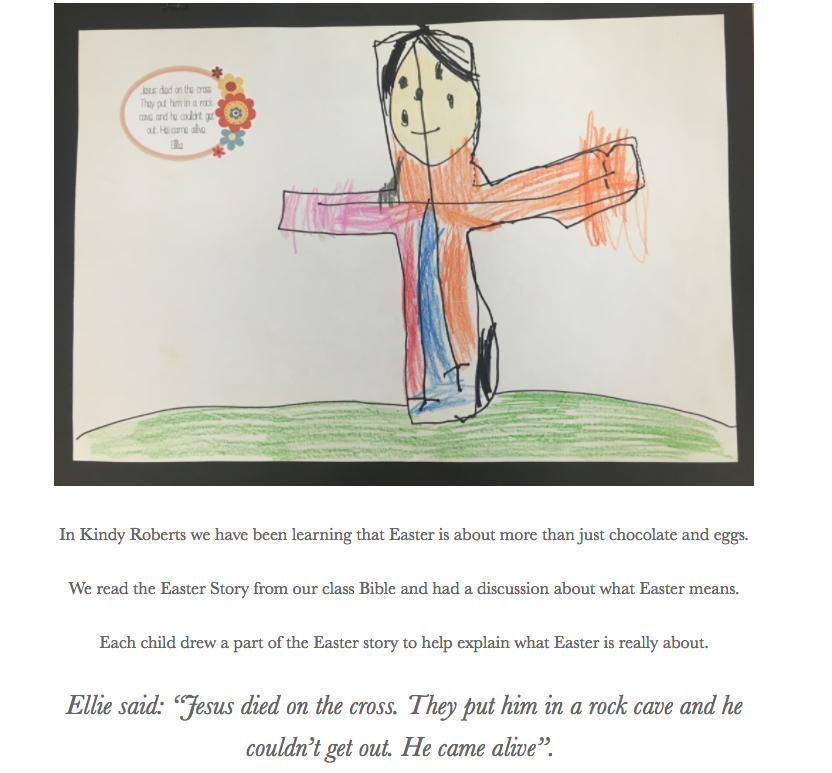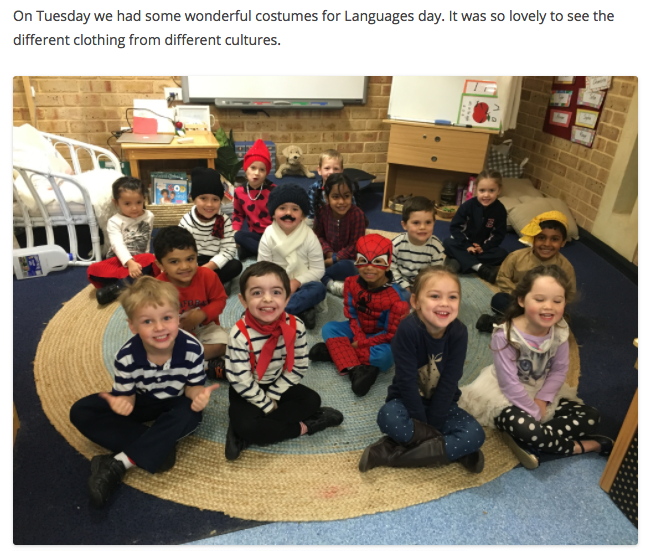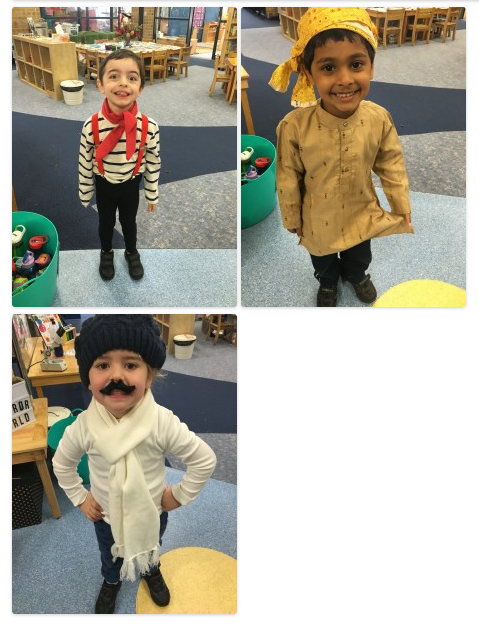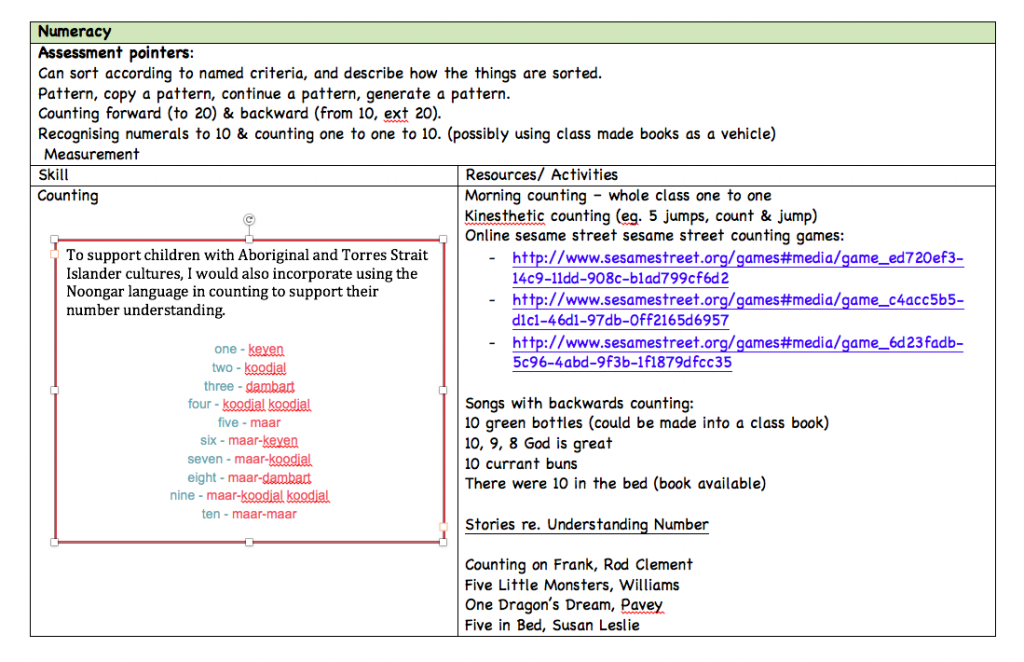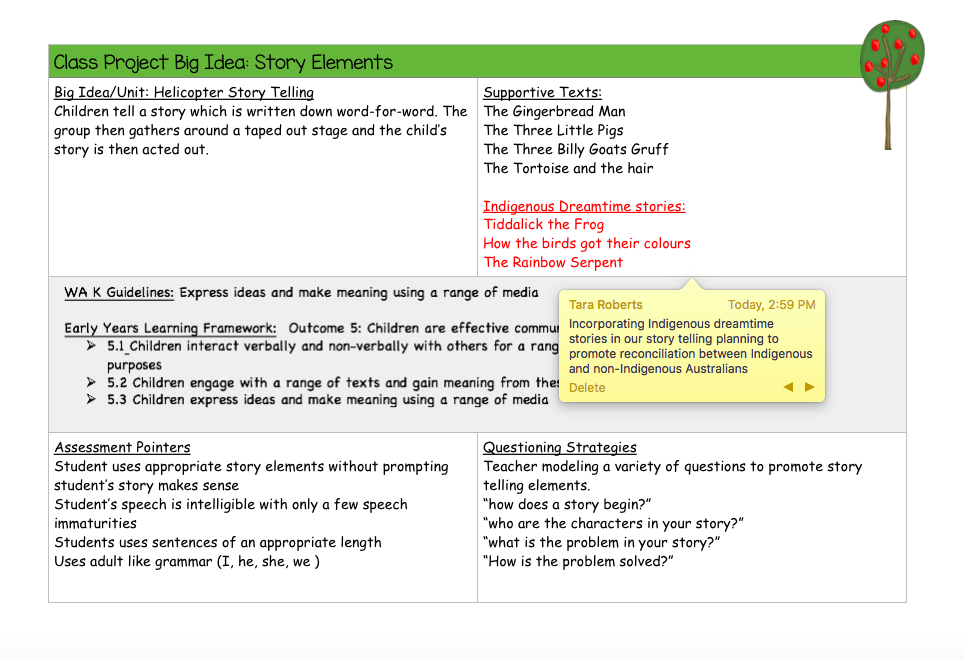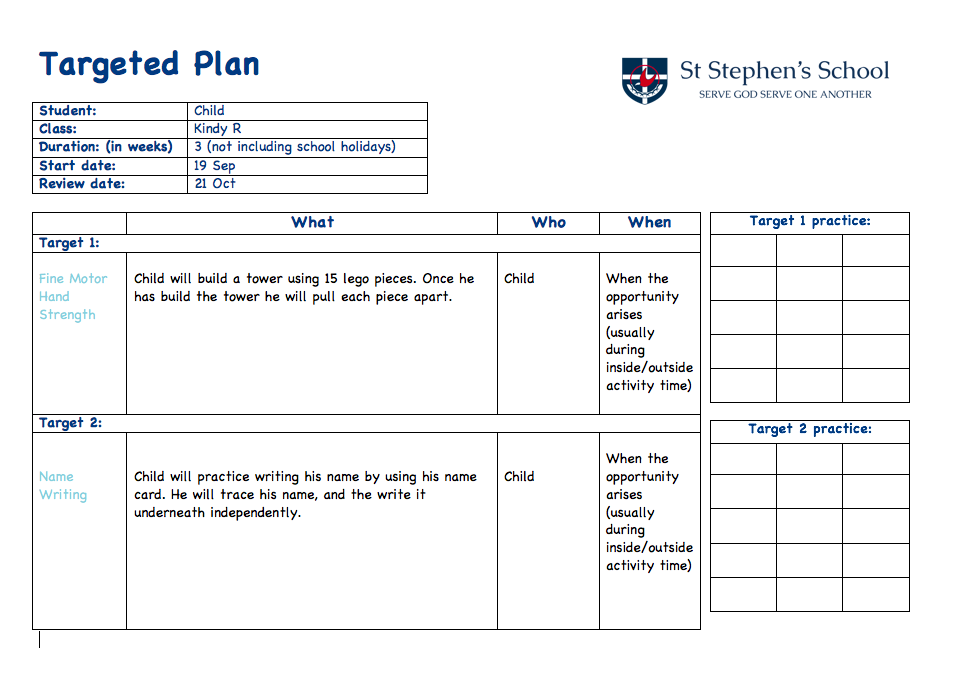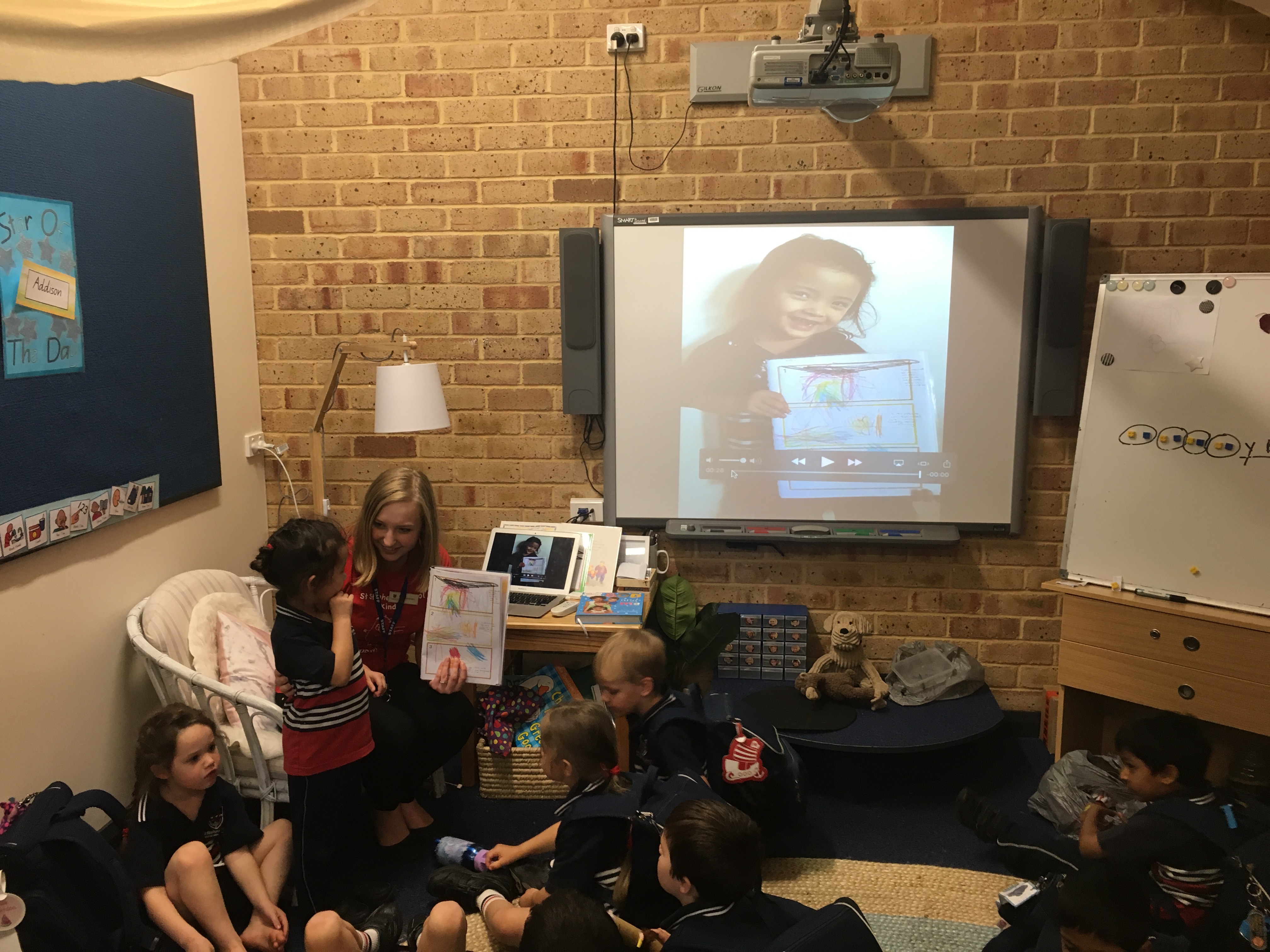Know students and how they learn
—————————————————————————————————————
1.1 Physical, social and intellectual development and characteristics of students
Use teaching strategies based on knowledge of students’ physical, social and intellectual development and characteristics to improve student learning.
During our phonological awareness program, I use my knowledge of the children’s physical, social and intellectual development to support their learning and participation. As each letter sound is taught to the children, I endeavour to include a range of strategies to engage children of all different learning styles and abilities.
The image below demonstrates the teaching strategies that I used to support a child with Cerebral Palsy and improve her learning.
———————————————————————————————————
1.2 Understand how students learn
Structure teaching programs using research and collegial advice about how students learn.
The attached document is a professional reflection from February 2016. It explains my process of reflection to improve a child’s learning opportunities in our Kindergarten. I used research readings from Early Childhood Australia and various education blogs which sited the research of Simon Nicholson.
Professional Reflection – Play
In week 4, of term 1 2017 I had a meeting with the Early Years Curriculum & Pedagogy coach. I explained to her that my plans for the term didn’t inspire me, or my students. I asked her opinion on changing the way that I approach inquiry based learning in my classroom. The Early Years Curriculum & Pedagogy coach encouraged me to try out a new way of inquiry based learning by doing 3 small projects with my class instead of a whole class inquiry. The samples below show my inquiry document before our conversation, and the three separate documents I created a week later.
Planning documents before the meeting:
Kindy Inquiry Project Planning Term 1 2017 – FINAL-10y5ucz
Planning documents created after the meeting:
Kindy RO Gradening INQUIRY -2nmhbn3
————————————————————————————
1.3 Students with diverse linguistic, cultural, religious and socioeconomic backgrounds
Design and implement teaching strategies that are responsive to the learning strengths and needs of students from diverse linguistic, cultural, religious and socioeconomic backgrounds.
In 2015, we had a large amount of children in Kindy with an Indian background. In October, we presented the families with the opportunity to share their cultural celebration of Diwali with the cohort. The children came in with their cultural dress and explained the celebration in their own words. Together, with their parents the students taught the group a traditional dance from their culture. This learning opportunity supported their learning outcome “Build knowledgeable and confident self identities, Display a positive image of self, their family and culture”. from the Kindergarten Curriculum Guidelines.
In Term 2, we begin to teach the children the Christian meaning behind Easter. The following blog post and photos display our responsiveness to religions and cultures.
On Tuesday 14 June we celebrated languages week in Kindy. The children were invited to dress in either traditional French attire, Indonesian traditional clothes (the languages taught at our school) or in an outfit that represents a language spoken at home. On the day, the canteen offered a range of French and Indonesian food for the children to experience. The children who were able to wear clothing that represented their origin were able to develop a better sense of identity (Outcome 1 in the Kindergarten Curriculum Guidelines) and their peers had the opportunity to build an understanding of their home culture.
—————————————————————————————————
1.4 Strategies for teaching Aboriginal and Torres Strait Islander students
Design and implement effective teaching strategies that are responsive to the local community and cultural setting, linguistic background and histories of Aboriginal and Torres Strait Islander students.
Our school is located in the south west of Australia, where the Aboriginal People are known as ‘Noongar’. Their language is known as Noongar as well. In the evidence below, I have annotated a section of my numeracy planning document to display how I would accomodate for Aboriginal and Torres Strait Islander students in Kindy.
To promote cultural understanding between Indigenous and non Indigenous Australians, we incorporate the Aboriginal dreamtime stories in our story telling sessions. The children become exposed to Aboriginal culture and histories through hearing about their legends. The evidence below, is an example of how we include their culture throughout the Kindergarten curriculum.
————————————————————————————————
1.5 Differentiate teaching to meet the specific learning needs of students across the full range of abilities
Develop teaching activities that incorporate differentiated strategies to meet the specific learning needs of students across the full range of abilities.
In 2017 we developed a team approach to differentiation. The kindy teachers worked collaboratively to create a document which identifies children who require additional support, children who require extension. We then elaborated on how we are going to meet their needs. This document is available to all Kindy staff to ensure they are aware of additional needs of the students that they are working with.

 To support and extend individual children in my class, I implement the use of ‘targeted plans’. Each targeted plan pinpoints the identified need of the child, and lists strategies used to support them. The following targeted plan samples display differentiating the curriculum to teach students at their point of need.
To support and extend individual children in my class, I implement the use of ‘targeted plans’. Each targeted plan pinpoints the identified need of the child, and lists strategies used to support them. The following targeted plan samples display differentiating the curriculum to teach students at their point of need.
——————————————————————————————————————
1.6 Strategies to support full participation of students with disability
Design and implement teaching activities that support the participation and learning of students with disability and address relevant policy and legislative requirements.
The picture below demonstrates my strategy to support full participation of students with disabilities. In 2016, a child in my class was diagnosed with ‘Selective Mutism’. To include her into our oral language program, I contacted her mother to see if she could ask her if she would like to take the news book home, and record a video for the class to see. The child agreed, and sent through a video that night.
The child had a big grin on her face, as we shared her news with the class through video.
The following support plan also demonstrates my ability to support full participation for a child in my class who has Cerebral Palsy.
———————————————————————————————————————

